Bulgarian cuisine is very diverse, one can say it is very colorful thanks to the variety of vegetables, herbs and fruits. In addition to the traditional Bulgarian meals, it shares some characteristics and a few dishes with the other Balkan countries, especially with Turkey and Greece.

Vegetables are the essentials of almost every dish. Salads are a must, there are many varieties such as Shopska salad, made with cucumbers, peppers, tomatoes, onions and white cheese) and Ovcharska salata (shepherd’s salad), made like Shopska salad but with an addition of grated eggs, mushrooms and sometimes ham. Another exceptionally delicious salad is Snezhanka (Snow White salad), made with cucumbers, yogurt, dill, garlic and often walnuts. Another specific salad popular during winter time is called Turshiya, it is made with pickled vegetables – mostly celery, beets, cabbage, cauliflower or carrots.
Other than salads, you can find the vegetables also in appetizers (for example, very popular are fried courgettes served with yogurt or garlic sauce) or in sauces such as Lyutenitsa, which is made with mashed tomatoes, grilled red bell peppers and carrots, it is also popular to use it as a spread on a piece of bread topped with white cheese.
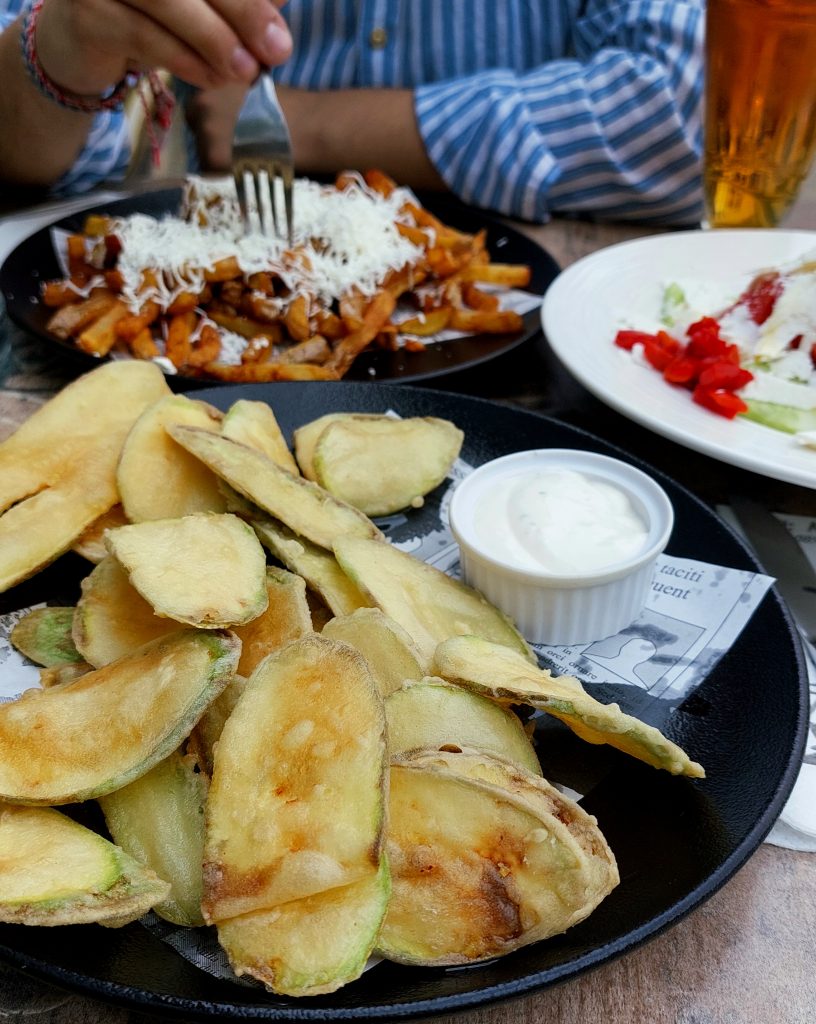
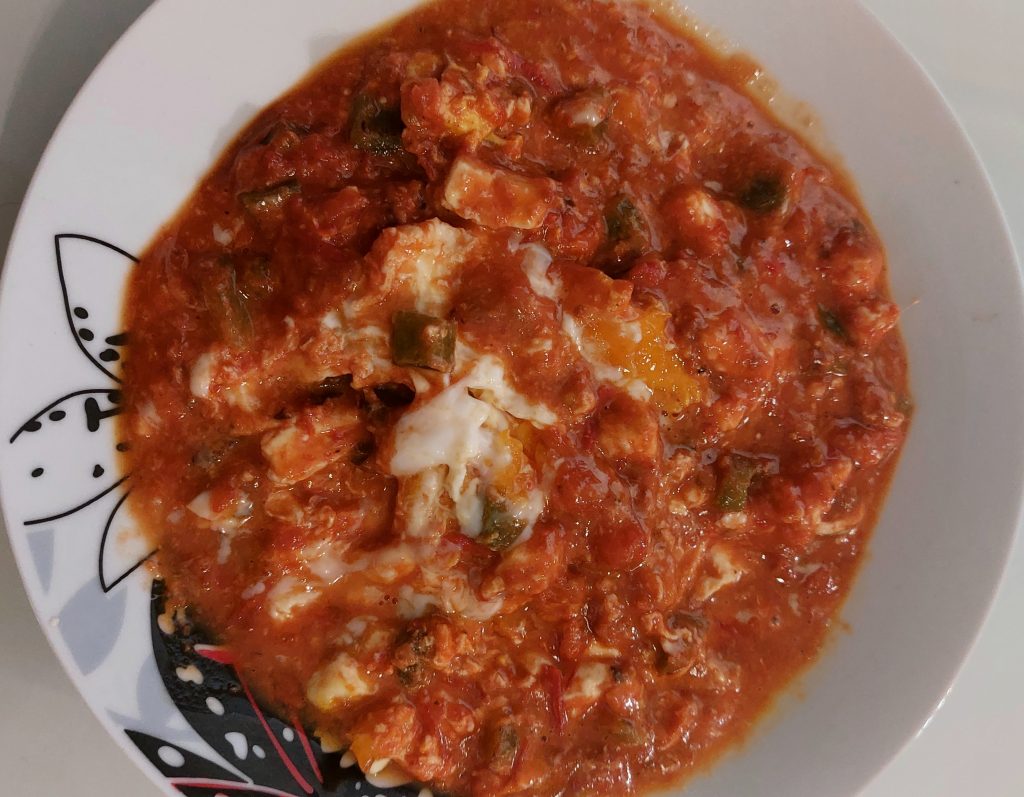
The cuisine contains a lot of stews such as Ghivetch.
Ghivetch is a dish made with vegetables sometimes also with a different kinds of meat, traditionally, it is cooked in a clay pot called ghivetch, this is where the dish got its name.
Soups are also a significant part of the cuisine. Again, you can find multiple kinds of soups from broths to cream soups. For example, there are soups made of lentils, spinach and even nettle. But the most popular of all would be a bean soup that is definitely a must try.
For the braver ones, there is a soup called Shkembe chorba (tripe soup). It is a traditional soup made with tripe and garlic. Bulgarians consider it to be a hangover cure.
There is also one cold soup called Tarator, best for the summer and hot weather. It is made with cucumbers, yogurt, water, salt, garlic, and depending on the region or each person’s preferences also with dill and walnuts.
Main dishes are again very diverse containing vegetables and a lot of meat. Here are some which you should definitely try:
Sarmi – they are either stuffed vine or cabbage leaves, the filling is made of minced meat mixed with rice. They are slowly cooked and you can eat them either as a stand alone or with a special sauce made of yogurt.
Moussaka is a potato based dish with minced meat that many Bulgarians love, although, it must be noted that this dish is shared among several other Balkan countries and its origin is not clear.
Stuffed bell peppers (Pulneni chushki) – the stuffing is made of minced meat mixed with rice. Same as the sarmi, they are slowly cooked and you can eat them either alone or with a special sauce made of yogurt, but the taste is completely different.
Mish-mash is a specific dish popular in summer. It is cooked with tomatoes, peppers, onion, white cheese and eggs.
Pork/chicken with rice/cabbage is also a very popular dish you should try.
These are a few of the main dishes, but there is so much more…
Particularly loved part of Bulgarian cuisine is grilled meat (skara). Simply grilled meat pieces, skewers (shishcheta), sausages such as Karnache or Nadenitsa with typical spices in them. Kyufte, meatballs of pork minced meat made with traditional spices and shaped as a ball, and Kebapche, also made of pork minced meat but seasoned with cumin and shaped as a stick, are probably the most popular from these.
Another very typical meal for the Rhodope region is Cheverme. It is a whole animal, typically a lamb, roasted on an open fire, rotated on a wooden skewer from 4 to 7 hours. It is usually made when celebrating for example a wedding or a birthday.
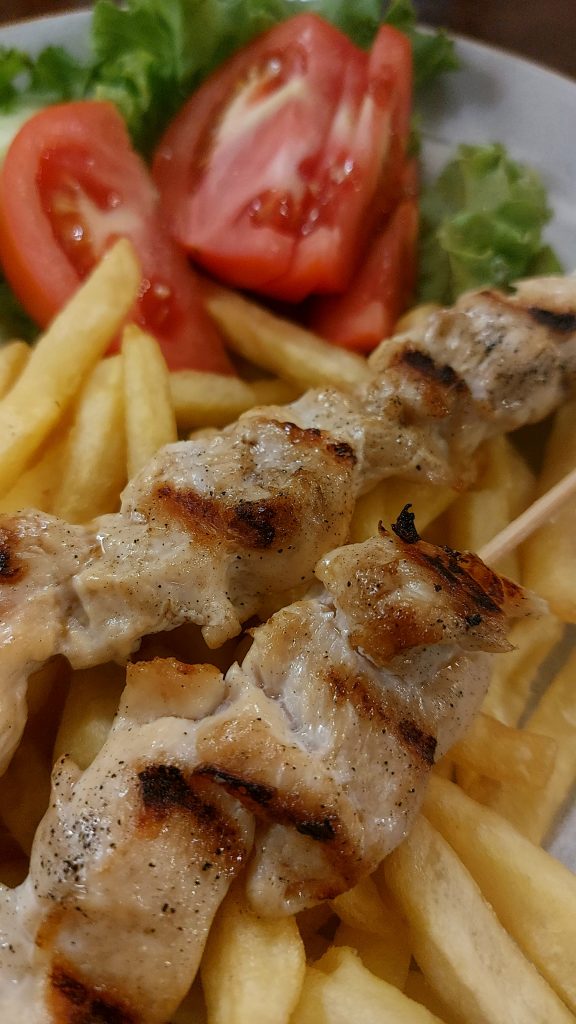

And idiosyncrasy of Bulgarian cuisine is the bread and pastries. You can find small bakeries on almost every corner selling Banitsa, a filo-based dough made with white cheese and eggs, it also has many varieties, or Milinki, a yeast based dough with white or yellow cheese and many more. Not only are there savoury pastries but also sweets such as Gevrek (simit) or Kiflichki usually with jam or chocolate.
Another typical sweet bread is Kozunak made of a yeast based dough usually baked for holidays such as Easter. Mekitsi are made of kneaded dough with flour, yogurt and eggs, shaped in flat rounds and deep fried. They are served either sweet with honey, jam or powdered sugar, or salty usually with white cheese. Very popular are also Parlenki (pita bread) usually with garlic butter, white or yellow cheese.
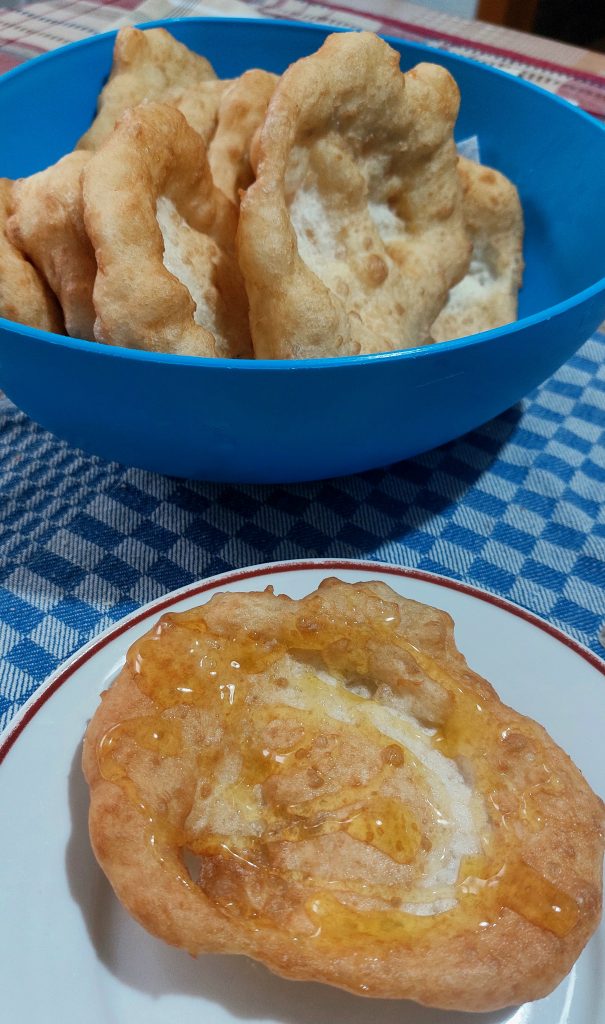
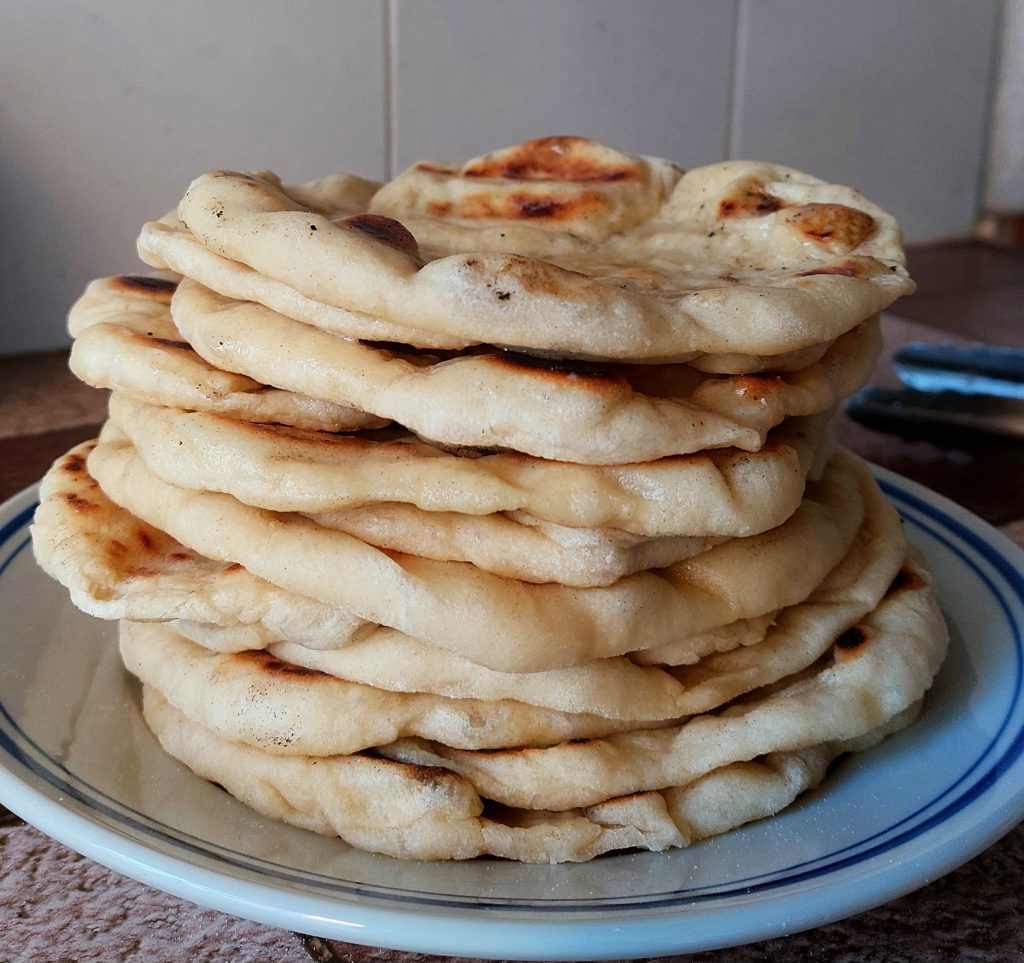
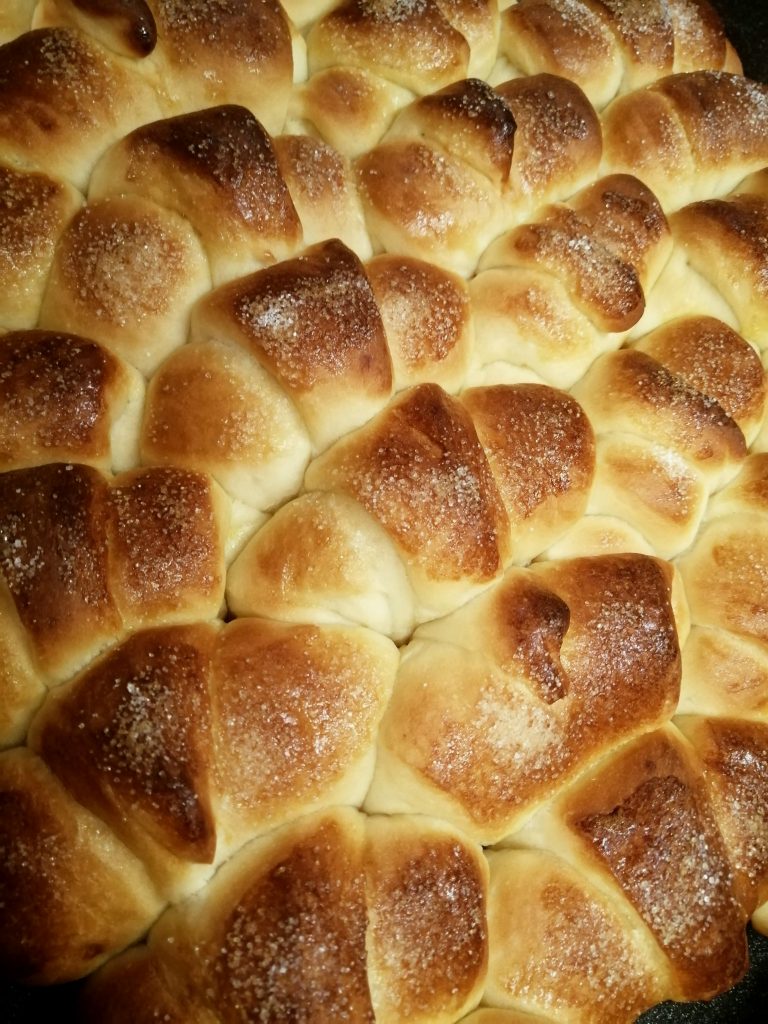
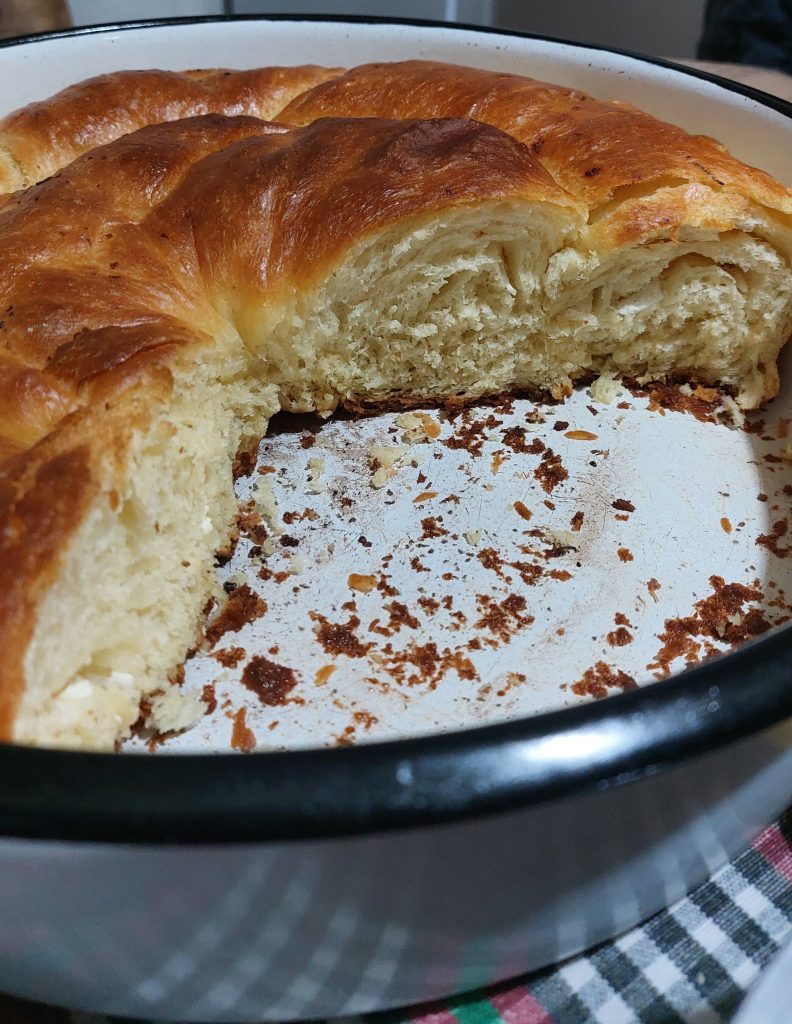
An indispensable part of the Bulgarian cuisine are dairy products. In Bulgaria, they even have their own bacteria (Lactobacillus bulgaricus) for making dairies such as Kiselo mlyako (Bulgarian yogurt). Ayran (a drink made with yogurt and water) and the yogurt go perfectly with breads and pastries, they are like an inseparable pair. And then, there are the popular cheeses – Kashkaval (hard yellow cheese) and Sirene (soft white brine cheese). As you can notice, sirene appears in many of the Bulgarian dishes.
Bulgaria is famous not only with food but also alcohol, especially Bulgarian wine and rakiya. Rakiya is a spirit made of fruits mostly grapes or plums, but, if the region is popular for its apricots, figs, pears and other fruits, they may be used instead. Also, there is a speciality, since Bulgaria is a country of roses, in the Valley of Roses region, there’s a rose rakiya or rose liquor made.
What goes well with alcohol, never mind if it is wine, beer or rakiya, is meze ( a “snack board”) usually served with different kinds of dried meat such as lukanka (semi-dried salami of minced beef and pork, strongly flavored), and different kinds of cheese.

Where to eat in Plovdiv
On weekdays, you can have lunch at the school canteen at the New Campus or if you feel lazy and you want to stay at home, there are many food delivery companies such as Takeaway or Glovo.
If you need a quick meal, as previously mentioned, there are bakeries on almost every corner where you can have banitsa with ayran.
If you want to try the typical Bulgarian cuisine, there are some restaurants you can visit. For example, Dayana restaurant in the center or restaurant Rahat tepe in the Old Town with a beautiful view of the city. There is also a restaurant called Megdana, the prices are a bit higher than the others but it comes with a program of typical Bulgarian folk dances.
In the center, there is a special place where you can try mekici, it is called Mekica i kafe and it is near the mosque.
If you are a fan of soups, there are many places where you can try different kinds of them.
And lastly, very popular is the Kapana district. It is a very attractive place with many cafés and bars, just be careful, the prices are usually higher as many tourists visit this part.

